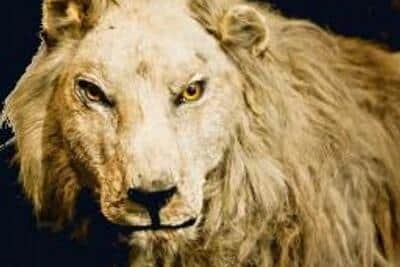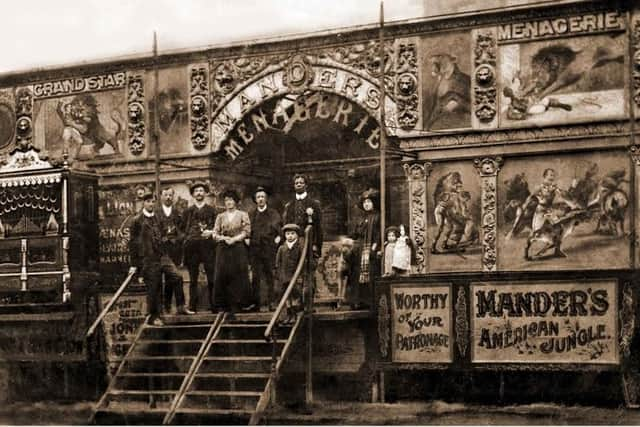The lion tamer who was buried in Sunderland - and the high-profile act which made him his living
and live on Freeview channel 276
Wallace is one of the most popular exhibits of the Sunderland Museum.
He stands imperiously on display in the ground floor of the building. But what is the history behind this display and just who was Maccomo?
Advertisement
Hide AdAdvertisement
Hide AdPhilip Curtis from the Sunderland Antiquarian Society looked into the tale and explains more.


Wallace the lion is known by thousands of Wearsiders and was bought by the Museum in 1879.
Generations of people from throughout the North East have seen him.
Yet how many know Wallace’s story and why he – and the man with a close association to him – came to be such a hit?
Advertisement
Hide AdAdvertisement
Hide AdWallace was bred in captivity and he was, along with other lions and tigers, as part of a lion-taming act which toured the country in the 1860s.


His trainer was called Maccomo. He was a man who was employed by William Mander’s Grand National Menagerie and went by various names.
He was billed as The African Wild Beast Tamer’ and sometimes The Hero of a Thousand Combats’.
However there have been suggestions that he may have been called Arthur Williams.
Advertisement
Hide AdAdvertisement
Hide AdMaccomo’s act was certainly dangerous and he was often bitten and attacked by the animals.
In 1861, during a show in Liverpool, his hand became lodged in the mouth of a Bengal tiger for more than five minutes.
In the end, it was only released when a keeper held a hot iron bar to the tiger’s mouth.
However, this did not deter Maccomo and he quickly returned to performing. Yet the drama was not over.
Advertisement
Hide AdAdvertisement
Hide AdWhile playing in Sunderland in 1869, Maccomo was attacked again - this time by Wallace who, ignoring the whip, sprang and pinned him against the side of the cage.
Maccomo was badly mauled before Wallace was eventually beaten off. He eventually recovered and, amazingly, Wallace was retained in the act.
Maccomo returned to Sunderland and, on January 11, 1871, while staying at the Palatine Hotel (just next door to the Museum) he died after suffering from rheumatic fever.
Wallace, however, outlived his trainer and eventually he died in 1875 at Warrington.
Advertisement
Hide AdAdvertisement
Hide AdSouth Shields taxidermist William Yellowby then prepared him before Wallace was purchased by Sunderland Museum in 1879, where he has been displayed ever since.
Martini Maccomo, meanwhile, was buried in Bishopwearmouth Cemetery. He was obviously well thought of by his employer, William Manners, who arranged for the erection of Maccomo’s gravestone. Today this can be seen in the Commonwealth Graves Section of the cemetery.
Wallace has only left the Museum once when he toured Sunderland in the July 1919 Peace Parade, standing behind a woman dressed as Britannia on an
open-topped car.
The Sunderland Antiquarian Society, which was founded in 1900, holds extensive archives which were amassed and donated by the people of Sunderland.
Advertisement
Hide AdAdvertisement
Hide AdTo find out more, interested people should visit the Antiquarian Society’s Facebook page or its website at http://www.sunderland-antiquarians.org
And to apply to become a member, email [email protected]
